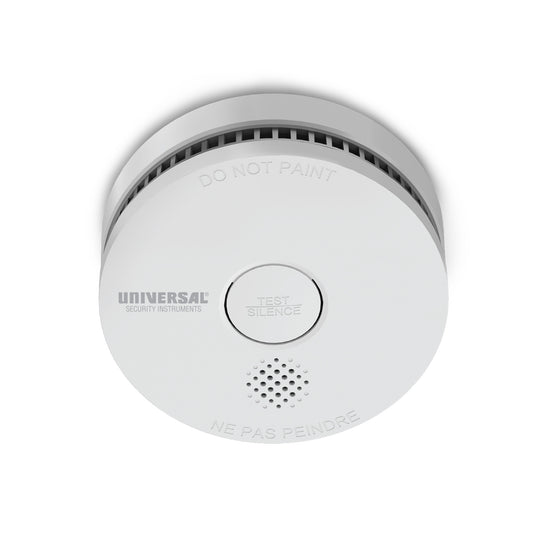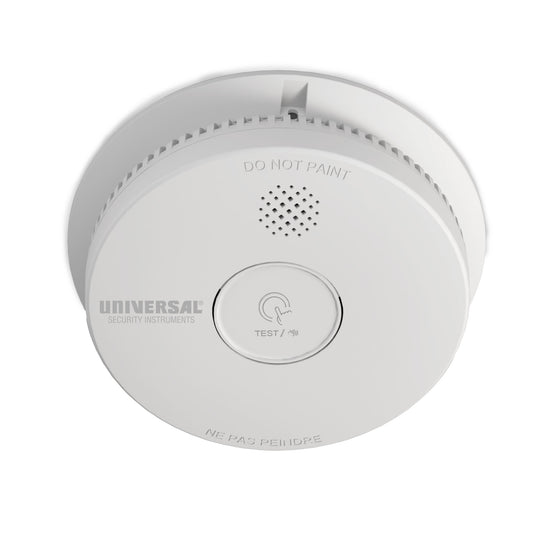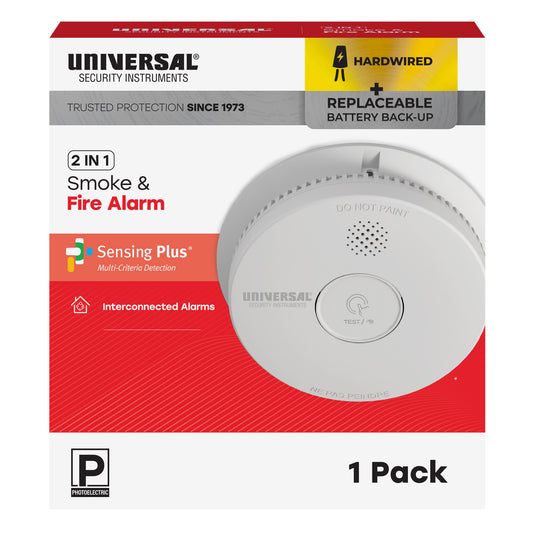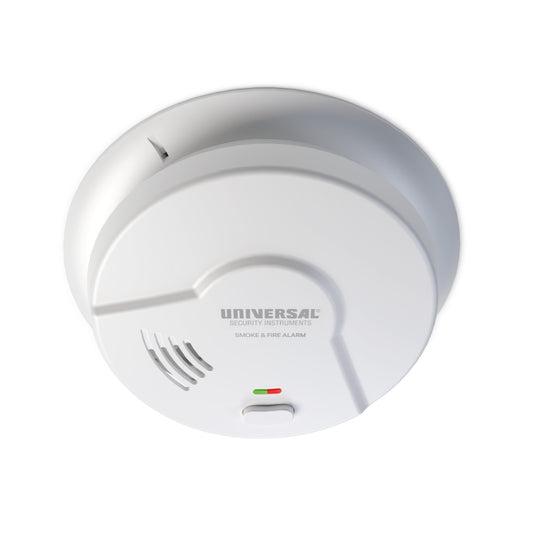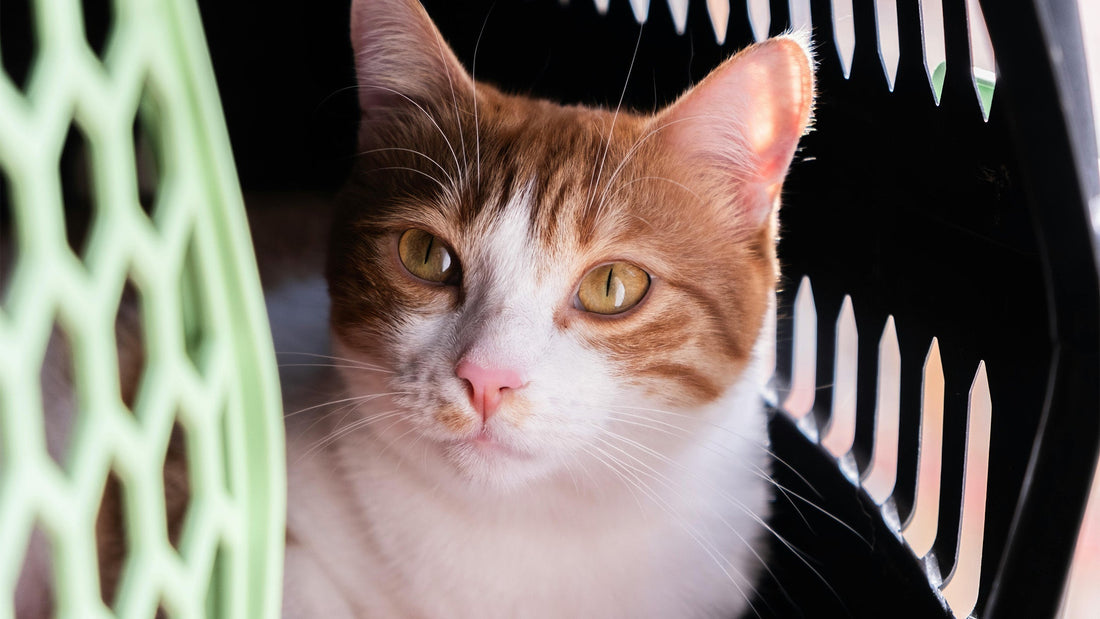
9 Must-Know Pet Fire Safety Tips That Could Save Your Furry Friend’s Life
Share
As pet owners, we go to great lengths to keep our furry friends safe and healthy. But have you thought about fire safety for your pets? Just as we take precautions to protect ourselves and our families, it's equally important to plan for the safety of our beloved pets in the event of a fire. Here are some essential tips to ensure your pets stay safe in an emergency.
1. Install Smoke and CO Alarms in Key Areas
The first step in any fire safety plan is ensuring that your home is equipped with properly functioning smoke and carbon monoxide (CO) alarms. Smoke alarms are essential in detecting fires early, giving you enough time to escape—and the same applies to pets. Install alarms on every level of your home, inside bedrooms, and near sleeping areas. Consider smoke alarms with interconnection features, so if one alarm sounds, all others go off, alerting everyone in the household, including your pets.
Don’t forget to test your alarms monthly and change the batteries at least twice a year. This routine will ensure that your alarms are always working when you need them most.
Click here to find the ideal alarm for your home
2. Create an Escape Plan that Includes Pets
Your family’s escape plan should include your pets. In the event of a fire, seconds count, so it’s crucial to have a plan in place for how you’ll get your pets to safety. Consider the following:
- Identify all possible exits from your home, including windows, and ensure they are accessible.
- Keep leashes, harnesses, and pet carriers near the exits so you can quickly grab them if necessary.
- If your pets are typically confined to certain areas, ensure that these areas are accessible during an emergency.
- Be sure to practice your escape plan with your pets, so everyone knows where to go and how to get out. If you have multiple pets, designate a person to be responsible for each one, ensuring they all make it safely out of the house.
3. Identify Pets with Tags or Microchips
In case of evacuation or rescue, it’s important to have a way to identify your pets. A collar with an ID tag is essential, and if possible, have your pet microchipped for added security. Microchipping ensures that if your pet gets lost in the chaos of a fire, they can be identified and returned to you.
4. Keep Emergency Numbers Handy
Keep a list of important emergency contacts in an easily accessible location. This should include:
- Your vet's contact information
- Animal control or emergency animal rescue services
- Neighbors who can help you evacuate your pets if needed
- In the event of a fire, having these contacts on hand can save precious time when you’re trying to get your pets to safety.
5. Protect Your Pets from Smoke Inhalation
Just like humans, pets are vulnerable to the harmful effects of smoke inhalation. If you are evacuating your home, make sure your pets are kept as far away from smoke and fire as possible. If your pets have respiratory issues, like asthma, they may be more vulnerable to smoke inhalation, so it's especially important to get them out quickly and into fresh air.
6. Consider Fire-Resistant Pet Gear
For households in fire-prone areas, fire-resistant pet gear, such as blankets or jackets, can provide an extra layer of protection for your pets. These items are designed to keep your pet safe from extreme heat during an evacuation. Though they won’t replace the need for timely evacuation, they can be helpful in giving your pet a bit more protection during the crisis.
7. Keep Pet-Friendly Fire Safety Tools on Hand
Some pet safety tools can make fire evacuations more efficient. Consider keeping a pet carrier, leash, and pet first aid kit near your exits. A pet first aid kit can come in handy if your pet gets injured during the evacuation or if they need medical attention afterward.
8. Make Sure Pet Sitters and Visitors Are Aware of Fire Safety
If you leave your pets with a sitter or a friend, make sure they are also aware of your pet fire safety plan. Leave a list of important contacts and any specific instructions regarding your pet’s needs during an emergency. This ensures that your pets will be cared for even when you're not around.
9. Monitor Your Pets After a Fire
Even after the fire is out, your pets might experience emotional stress or injury. Check your pets for any signs of smoke inhalation, burns, or anxiety. If your pet seems stressed or disoriented after the incident, it may help to have a vet assess them. Provide a calm, safe environment where they can rest and recover from the trauma.
At USI, we believe that safety starts with being prepared. Implementing these pet fire safety tips in your home will help ensure that your pets are as safe as possible in case of an emergency. Remember, fire safety is a family affair, and that includes our furry family members. With the right preparation and precautions, you can protect your home and loved ones—two-legged and four-legged alike.


